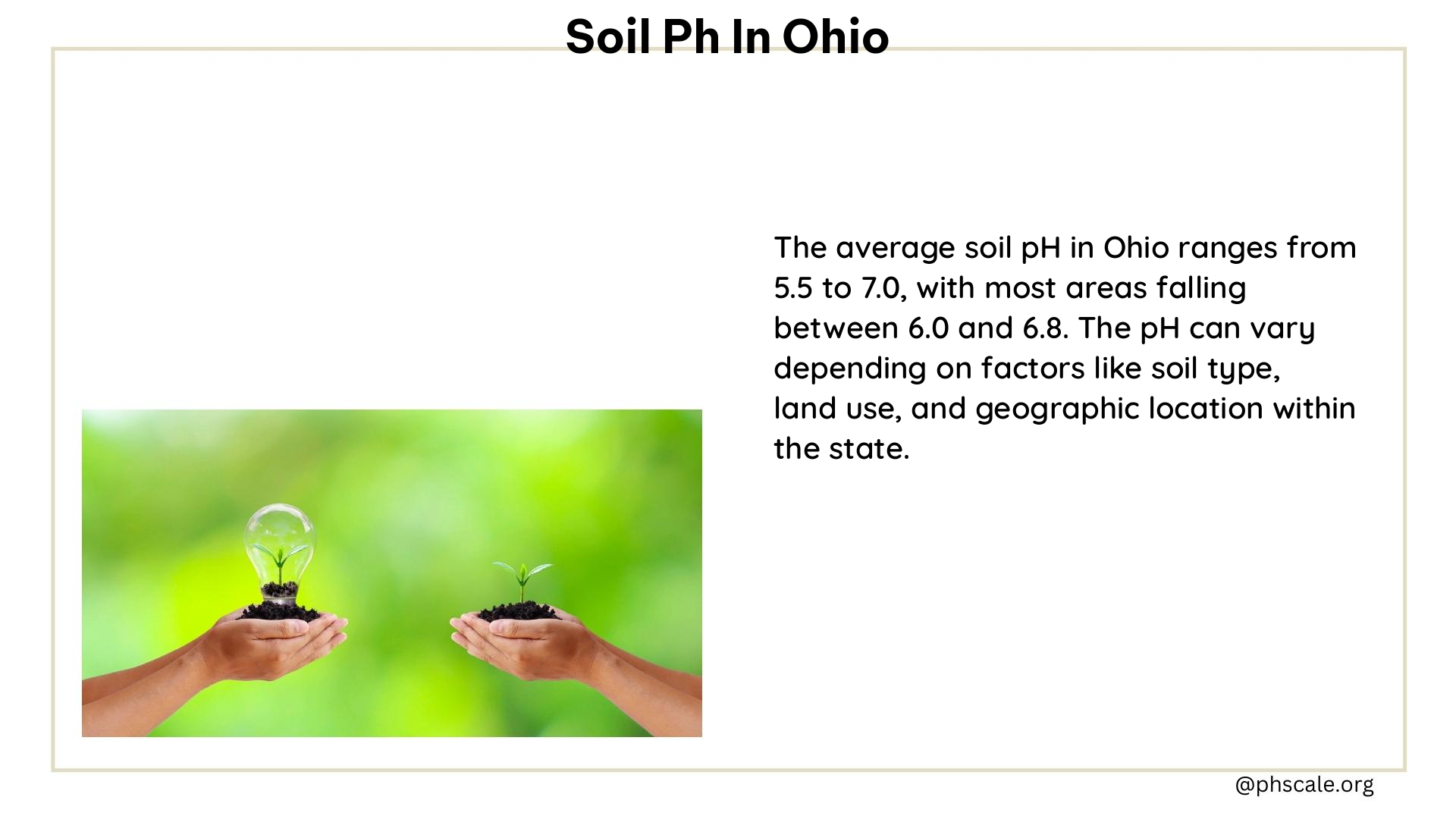Soil pH is a critical factor in Ohio’s agricultural landscape, determining the availability of essential nutrients and the overall health of plants. Whether you’re a seasoned farmer, a passionate gardener, or a homeowner looking to maintain a lush lawn, understanding the intricacies of soil pH in Ohio is crucial for achieving optimal growing conditions.
Ideal pH Range for Most Plants in Ohio
The ideal pH range for most plants in Ohio falls between 6.5 and 7.0, which is considered neutral. However, certain crops have specific pH preferences:
| Crop | Ideal pH Range |
|---|---|
| Legumes | 6.2 or higher |
| Corn | As low as 6.0 |
Maintaining the appropriate pH level is essential for ensuring that plants can effectively absorb the necessary nutrients from the soil.
Causes of Soil Acidity in Ohio

The soil in Ohio can become acidic due to several factors, including:
- Soil Parent Material: Soils derived from sandstone and shale parent materials, common in eastern Ohio, tend to be more acidic.
- Climate: The high rainfall and subsequent leaching of basic cations (such as calcium and magnesium) contribute to the development of acidic soils.
- Agricultural Practices: Intensive crop production and the use of certain nitrogen fertilizers can also lead to increased soil acidity over time.
Understanding the underlying causes of soil acidity is crucial for developing effective strategies to address and maintain optimal pH levels.
Adjusting Soil pH in Ohio
Adjusting the soil pH in Ohio involves a multi-step process:
- Soil Sampling and Testing: Collect soil samples to a depth of 8 inches for tilled soils and 4 inches for no-till soils. Soil pH measurement is a routine analysis conducted by soil testing laboratories.
- Lime Application: Based on the soil test results, apply the appropriate amount of lime to neutralize the acidity and bring the pH to the desired level. The specific lime application rate will depend on the current soil pH, the target pH, and the crop being grown.
Regular soil testing and the timely application of lime are essential for maintaining optimal soil pH in Ohio.
Common Methods for Testing and Maintaining Optimal Soil pH in Ohio
- Soil Testing: Regularly test your soil’s pH to determine if adjustments are needed. This can be done through soil testing laboratories or with at-home soil test kits.
- Organic Matter: Incorporate organic matter, such as compost or well-rotted manure, into the soil. This can help maintain optimal pH levels and improve overall soil health.
- Lime Application: Apply lime as needed to adjust the soil pH. The amount of lime required will depend on the current pH, the target pH, and the specific crop or plants being grown.
By following these best practices, you can ensure that your soil in Ohio maintains the optimal pH range for healthy plant growth.
Contaminants and Chemicals in Ohio Soil
In addition to pH, Ohio’s soils may also contain other potential contaminants and chemicals that can impact plant growth and human health:
- Aluminum: High concentrations of aluminum in acidic soils can inhibit root growth and nutrient uptake.
- Heavy Metals: Soils in Ohio may contain elevated levels of heavy metals, such as lead, which can be detrimental to plant growth and pose a risk to human health.
Addressing these soil-related issues requires a comprehensive approach that considers both pH management and the mitigation of harmful contaminants.
Solutions and Alternatives
To maintain optimal soil health and address the challenges of soil pH in Ohio, consider the following solutions and alternatives:
- Organic Matter: Incorporate organic matter, such as compost or well-rotted manure, into the soil to help maintain optimal pH levels and improve overall soil health.
- Cover Crops: Plant cover crops to help maintain soil health, reduce soil erosion, and contribute to the overall sustainability of your growing system.
- Integrated Pest Management: Implement integrated pest management strategies to minimize the use of chemicals and maintain the health of your soil.
By adopting these practices, you can create a thriving, sustainable growing environment in Ohio, ensuring the long-term productivity and resilience of your soil.
Helpful Resources
For more information on soil pH in Ohio and related topics, consider the following resources:
- Ohio Agronomy Guide: Provides detailed information on soil pH and its impact on crop production.
- Soil Health – The Ohio State University: Offers resources on soil health assessment and management.
- Ohio Department of Agriculture: Provides information on soil regions and parent materials in Ohio.
By understanding the complexities of soil pH in Ohio and implementing the appropriate management strategies, you can create a thriving, productive growing environment that supports the health and growth of your plants.
References
- Soil Acidity and Liming for Agronomic Production | Ohioline. (2016, November 2). Retrieved from https://ohioline.osu.edu/factsheet/AGF-505-07
- The Root of Many Plant Problems in Central Ohio: Soil pH. (2024, April 24). Retrieved from https://www.russelltreeexperts.com/arbor-ed/soil-ph-the-root-of-many-plant-problems-in-central-ohio
- Is Ohio Soil Acidic? | Free Spray Lawn Care. (2016, June 2). Retrieved from https://freespray.com/blog/is-ohio-soil-acidic/
- Soil Regions of Ohio. (2018). Retrieved from https://agri.ohio.gov/wps/wcm/connect/gov/13c3c9ae-6856-48d9-9a05-59e093d50970/Soil_Regions_of_Ohio_brochure_2018.pdf?MOD=AJPERES&CONVERT_TO=url&CACHEID=ROOTWORKSPACE.Z18_M1HGGIK0N0JO00QO9DDDDM3000-13c3c9ae-6856-48d9-9a05-59e093d50970-mPknVPv
- Soil Type & History – Soil Health – The Ohio State University. Retrieved from https://soilhealth.osu.edu/soil-health-assessment/soil-type-history
